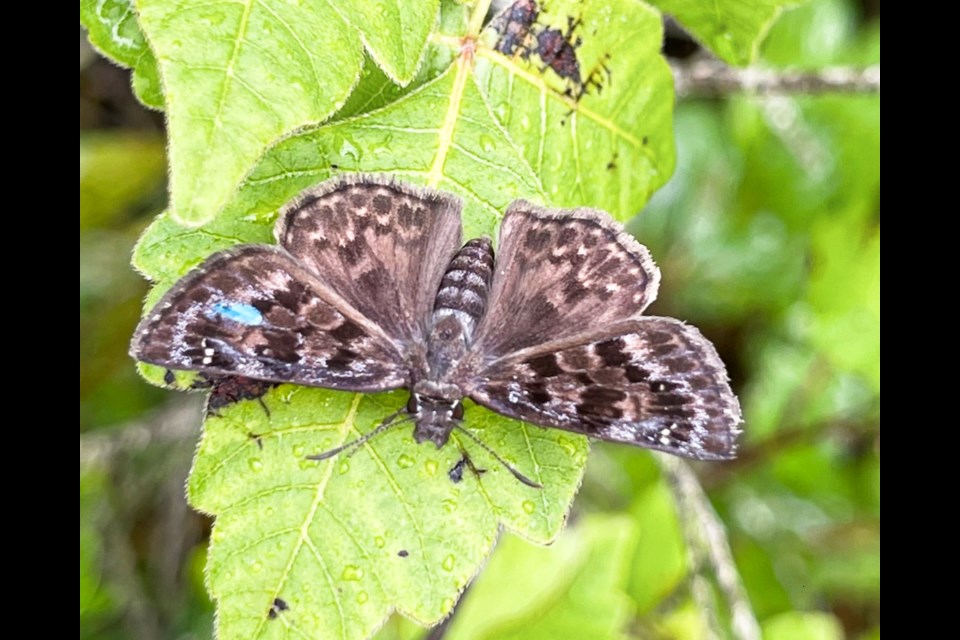A University of Guelph project reintroducing endangered butterflies to an Ontario park is soaring to new heights.
After about 700 mottled duskywing butterflies were reared and released into Pinery Provincial Park on Lake Huron last summer, 10 sightings of the brown and grey speckled species have been confirmed.
Ryan Norris is an integrative biology professor at the University of Guelph and is one member of a research team which is reintroducing mottled duskywings. He recalls the first report of a mottled duskywing sighting came from an app called iNaturalist, and was misidentified.
"We were skeptical, because there's multiple duskywing species, mottled duskywing being one of them, and they look quite similar to each other," said Norris, "so somebody who is not familiar with butterflies could easily misidentify them."
Norris explains each report submitted to iNaturalist is vetted by a professional from the app, who Norris was familiar with. Upon reviewing the report, the vetter changed it to cite the mottled duskywing butterfly as the butterfly spotted instead.
"When we found out that the vetter had actually changed it, we were excited," said Norris, who went to the reported site with a colleague and senior biologist at Natural Resource Solutions Inc., and co-lead of the project, Jessica Linton.
"We went out later that day to the spot where the person had seen the duskywing and we had spotted the duskywing."
The last time mottled duskywing butterflies were spotted at Pinery Provincial Park was in the mid 1990s. Once populous in Ontario, the species was declared endangered in Canada in 2012 due to habitat loss.
With this report, it tells the researchers some of the released butterflies, along with pupae and larvae, have successfully overwintered.
"They've either overwintered as the individuals that we reintroduced overwinter, but some of their offspring that we had in the last year that we've reintroduced, have successfully overwintered as well," said Norris.
Taking these sightings as a great sign, Norris mentions he is not calling the project a success just yet as they need the population to be self-sustaining.
When it comes to other butterfly reintroduction projects, Norris said most of these projects fail. The last big attempt to reintroduce an endangered butterfly species in Ontario was the Karner blue butterfly in the 1990s, which also failed.
“About 80 per cent of them fail within their first year,” said Norris, “that isn’t to say they won’t fail overall, but most aren’t successful in their first attempt.”
As reintroduction becomes more common around the world, the return of mottled duskywings to Pinery Provincial Park indicates it is possible to restore what has been lost.
"We do want to try and reach some sort of state that is representative of the past, because every piece of diversity is important," said Norris.
Norris adds all research team members played an important role in this project, from Linton who originally expressed an interest in reintroducing the species, to Adrienne Brewster, the executive director at the Cambridge Butterfly Conservatory, which reared all the mottled duskywings.
Wildlife Preservation Canada will help researchers begin a count of butterflies that have survived and track their activities over the summer. Later this summer, the team will also introduce another group of reared butterflies to the area.



